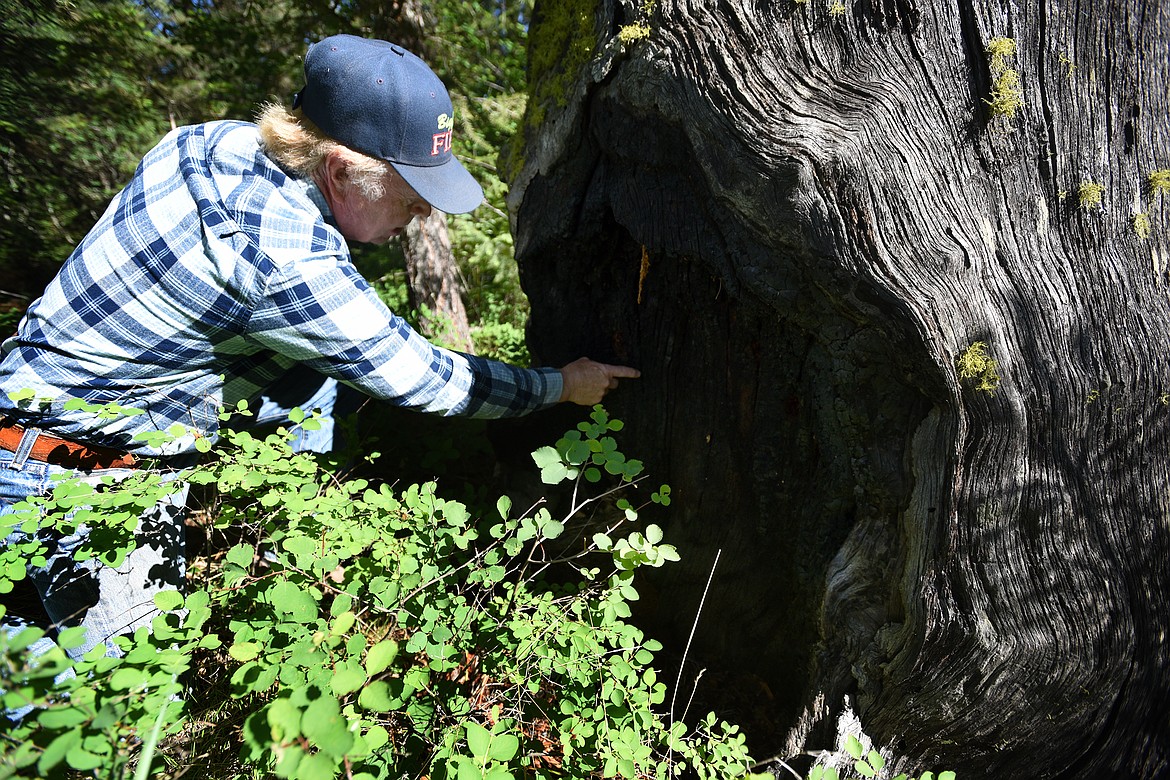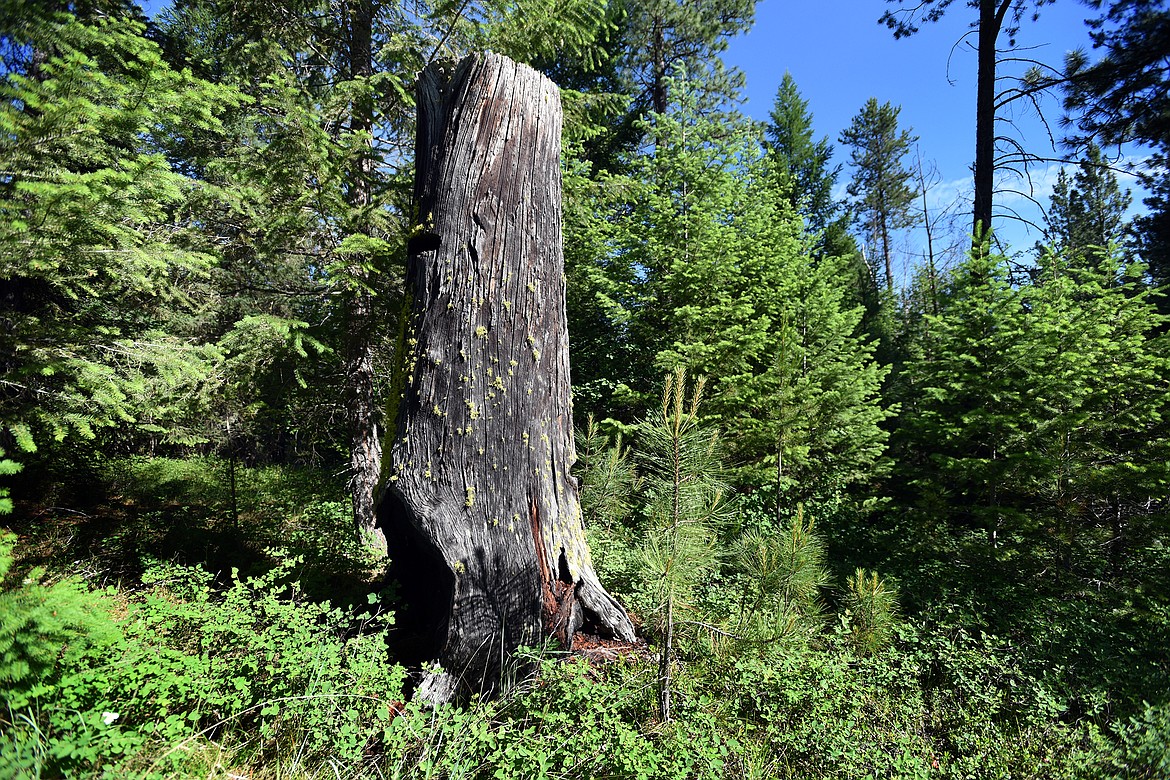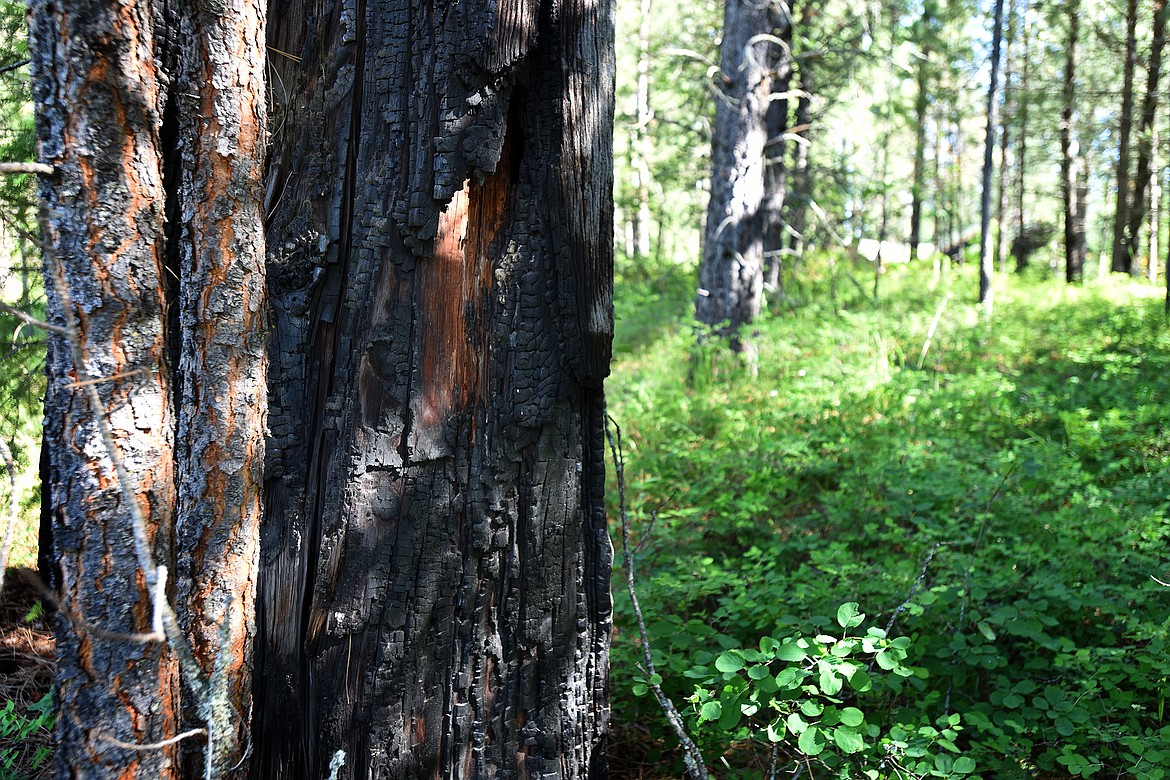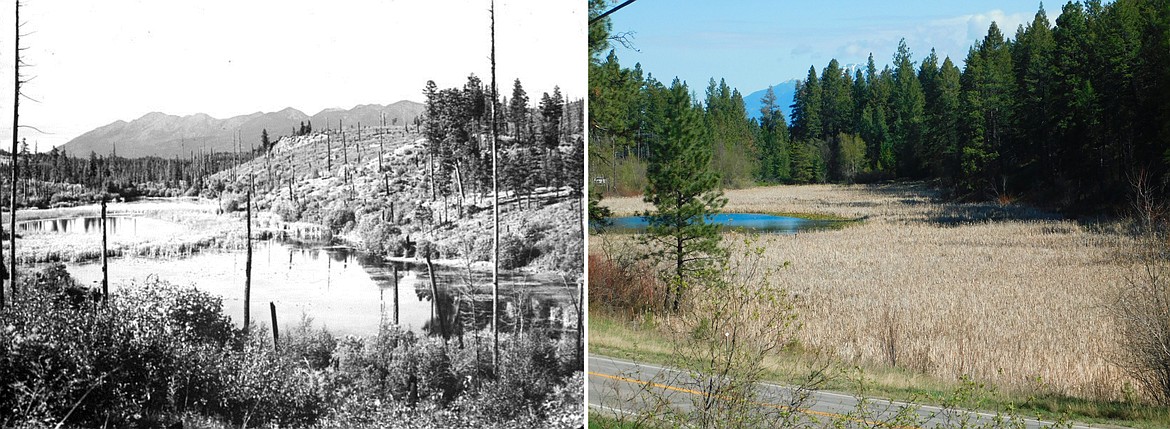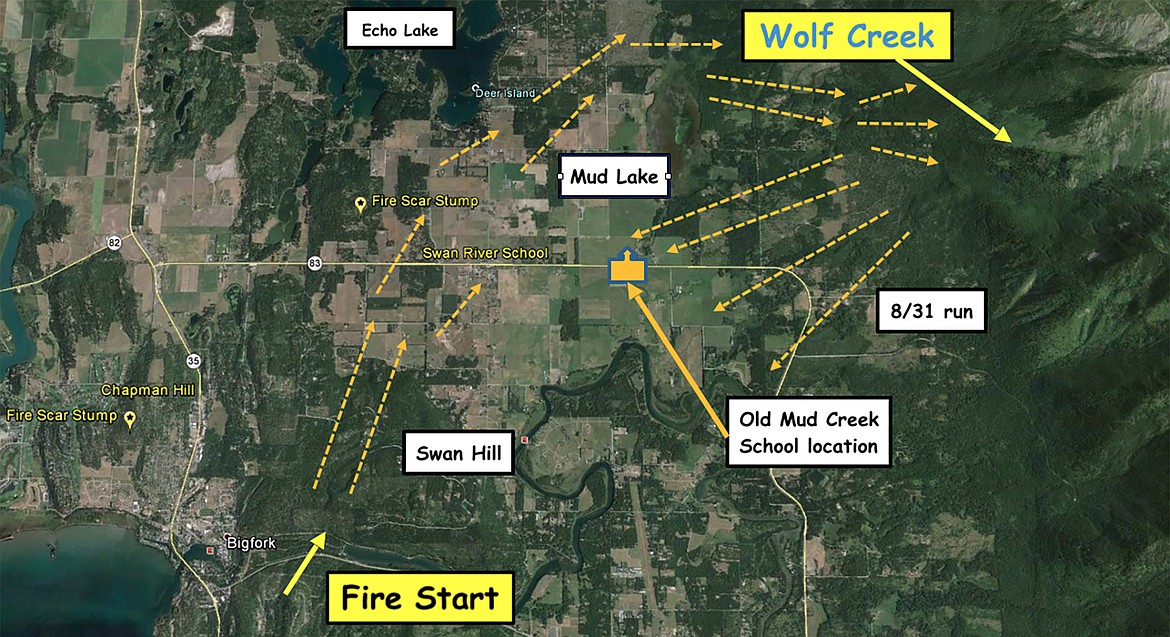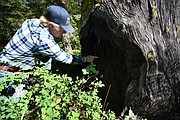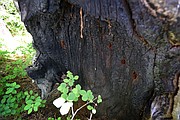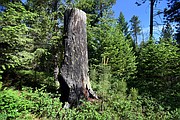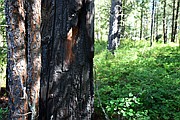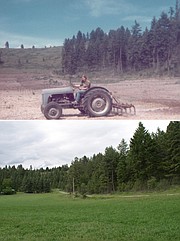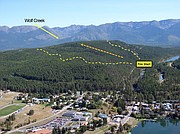Bigfork man's research chronicles Echo Lake Fire of 1921
It began as a small campfire that got out of control.
One hundred years later, the scars of the 3,000-acre Echo Lake Fire still can be found in the forests and fields north of Bigfork.
Charred larch stumps, changed lives and a lost and forgotten silent film are all a part of the story that Bigfork’s Rick Trembath has been slowly piecing together from oral histories, books, newspaper articles and firsthand observation.
“I think the history of this fire tells the story, a tremendous story, of neighbors who came together to help fight a large fire in the hopes of saving their homes,” Trembath said.
With 52 years of experience fighting wildfires in 18 states from Minnesota to Montana, Trembath is fascinated by the century-old fire, which stood out as the most destructive Montana blaze of a 1921 fire season that was more subdued than most.
What later became known as the Echo Lake Fire began on the south side of Swan Hill, somewhere near the Swan River Dam, on the evening of Thursday, Aug. 4, 1921. While the cause of the fire officially is listed as unknown, Trembath has heard accounts over the years that contend the source was a campfire that got out of control.
Newspaper accounts from the time report the fire quickly grew to 100 acres and was as large as 500 acres by Aug. 7. An article in the Daily Inter Lake from Aug. 8 of that year gives accounts of tourists traveling along the West Shore Road who stated that large flames could be seen rising from the trees atop Swan Hill. The same article stated picnickers on Somers Beach could watch the flames as they made their way up the hillside.
While approximately 75 men were on-scene battling the fire, by the following day the blaze had moved beyond Swan Hill and into the flats to the north, burning at a low to medium intensity.
By Aug. 10, the fire had grown to 2,500 acres as warm, dry weather led to more fires breaking out across the region. According to an article from that day, a pair of fires had broken out near Eureka, a 500-acre fire was burning along Coal Creek in the North Fork and numerous fires had been reported into Idaho and beyond.
Crews had managed to dig ditches on three sides of the Echo Lake Fire by Aug. 12 as newspapers reported the fire to be “in the midst of a settlement of farmers, with a large number of homes facing the possibility of destruction by the flames.” The article reported that “Unless a very high wind arises, it (the fire) is not likely to spread very much more.”
WITH MORE than 200 men working to contain the fire, rain moved into the area in the early morning of Aug. 15 and continued for two days. With the fire seemingly under control, it dropped out of news coverage for two weeks.
A high wind event, unusually blowing in from the northeast, brought the fire back with a vengeance Aug. 30.
Burning from Mud Lake to Echo Lake, the renewed blaze destroyed the Mud Lake School (rebuilt later as the Swan River School), as well as numerous crops, barns and other structures as locals came together in an effort to help save their homes.
A Daily Inter Lake article from Sept. 1, 1921, states “As the area now burning is neither in the forest reserve nor the territory of the Northern Montana Forestry Association, no help can be secured from either and the farmers and settlers in that section are fighting the flames alone. It is said that between 50 and 75 men are on the fire lines. Many homes have been saved by the use of wet blankets.”
According to Trembath, this lack of government assistance was normal for the time.
“Firefighting on private land amongst the homesteads was something that the Forest Service did not do — farmers and settlers had to battle to save their own homes. They had shovels. They had hoes and they had axes, but they knew how to use them,” Trembath said about the event. “People underestimate the men fighting the fires back then. A lot of the people fighting that fire would have been woods workers. They didn’t have water available to them, but they knew how to work a fire. They used fire against fire and understood fire behavior. They were much more effective than people would think.”
The fire continued to spread until heavy rains swept through the area Sept. 2-3, effectively ending the threat.
One of the more interesting facts about the fire was that it may have been one of the first wildfires captured on film by an entity other than the National Forest Service.
A Sept. 15, 1921, issue of the Columbian included a review of a locally produced film that included images of the Echo Lake Fire. The article reported that the camera operator "got so close that many feet of the best film were burned and the cameraman narrowly escaped with his life."
REMNANTS OF the fire can still be found in the area, most notably the charred larch stumps that can be found in the forested area lining Old Paint Trail Road. The 1921 fire wiped out the larch stumps that remained in the area after heavy logging, with the larch forest now replaced by ponderosa pine, douglas fir, grand fir and spruce.
After studying historic photographs, Trembath estimates the area to have five to 10 times as many trees as it did in 1921 and speculates that if a similar fire were to move through the area today, the results could be considerably more catastrophic.
“Your average homeowners are really unable to keep up with the growth occurring every year. I maintain that an average acre of forest land in the area around Swan Hill grows roughly 1 ton of biomass per year. Unfortunately, the dead material does not rot that fast, so the fuels are constantly accumulating without human intervention,” Trembath said.
“In a sense, we have been lucky up here over the past 100 years,” he added. “We’ve had some fires, but we have always been able to catch them before they got out of control. I think that can sometimes give people a false impression that we will always be able to do that with every fire. That is not always going to be the case.”
Reporter Jeremy Weber may be reached at 758-4446 or jweber@dailyinterlake.com



